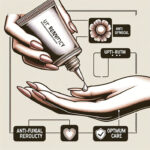Expert Advice on Managing Finger Nail Fungus

Practical Tips for Dealing with Finger Nail Fungus
Getting to Know Finger Nail Fungus
So, What Exactly Is Finger Nail Fungus?
Finger nail fungus is something more common than you might think. It happens when a fungal infection sneaks into your nail, causing it to discolor, thicken, and even crumble. Sure, an unsightly nail can be a nuisance on its own, but if left untreated, it might also bring along some discomfort. Many people wonder if it's just a cosmetic issue or something more deeply health-related—and the truth tends to be a mix of both. It might start off as a minor annoyance, but over time, that pesky fungus can really mess with your overall nail health. The key? Spotting it early and taking action.
Why Does It Happen? Common Culprits and Risky Behaviors
There are a bunch of reasons why you might end up with finger nail fungus. Ever spent too much time around water or used shared nail tools? Those are prime conditions for fungal growth. Even seemingly harmless habits like frequent hand washing or sharing your personal grooming items can up your risk. Add in conditions like diabetes or a weakened immune system, and you're even more vulnerable. And let’s not forget that nail biting or chronic exposure to damp environments can quickly turn everyday routines into potential risks. Knowing these triggers is super helpful in keeping the fungus at bay.
Spotting the Early Clues
The first hints of a fungal infection on your nails are usually pretty subtle—a little change in color or a slight thickening along the edge might be all you notice. Sometimes, you might even see a faint yellow or white streak. Others might find their nails getting a bit brittle, which can raise red flags during your daily routine. Catching these early signs means you can beef up your nail care routine and keep an eye on things before the problem escalates.
Understanding the Signs of Finger Nail Fungus
Visual Changes: What Your Nails Might Tell You
One of the easiest ways to tell something’s off is by just looking at your nails. If you notice they’re turning yellow, brown, or white, or if they've started to look thicker and are even getting crumbly, that's a sign that fungus might be at work. These changes can creep up slowly, so keeping tabs on even the smallest shifts can really help you catch things early. Once you notice something unusual, you’re in a better position to act before things get out of hand.
The Not-So-Fun Side Effects: Pain and Discomfort
Besides the change in looks, finger nail fungus can sometimes start causing pain, especially as the infection digs deeper. Your nail might feel tender when you press on it, or you might sense an uncomfortable pressure around the area. Early on, pain isn’t always present, but it can develop as the fungus takes hold, disrupting the nail’s natural structure. For lots of people, this discomfort serves as a wake-up call, prompting them to get a proper check-up and avoid potential complications.
When It’s Time to Call in the Pros
If you see persistent changes in your nail’s appearance, especially when you combine them with some discomfort, it’s a good idea to talk with a healthcare professional sooner rather than later. Early treatment can really change the game. Doctors can sort out whether what you’re noticing is indeed nail fungus or something else mimicking similar symptoms. Their expert take is particularly important if you’re feeling significant pain or if multiple nails are affected. Getting professional advice quickly can make your treatment both timely and effective.
How Finger Nail Fungus Is Diagnosed
The Medical History Chat and Physical Exam
Diagnosing finger nail fungus usually kicks off with your healthcare provider taking a good look at your medical history. They might ask about any previous issues, your daily habits, and overall nail care. This background info, along with a close-up look at your nail’s color, thickness, and texture, can help them figure out if a fungus is really the culprit. This hands-on examination goes a long way in telling whether you’re dealing with a fungal infection or something else entirely.
Lab Tests That Pinpoint the Problem
Sometimes, a physical exam isn’t enough. That’s when lab tests come into play. A tiny sample from your nail or even some debris might be taken and checked under a microscope or cultured to pinpoint exactly which fungus is causing trouble. While these tests might take a bit more time and effort, they give a rock-solid diagnosis that’s essential for choosing the right treatment path.
Treatment Options for Finger Nail Fungus
Over-the-Counter Solutions and Topical Treatments
For many folks, the first step in fighting off finger nail fungus is grabbing an over-the-counter antifungal cream or solution. You simply apply it to your affected nail and the skin around it. While these products can help slow the fungus down, they usually need a regular, consistent application—think several weeks—before you start noticing any real improvement. Sticking to the regimen is key, since any slip-ups might give the fungus an opening to bounce back.
Stepping Up to Prescription Medications and Oral Therapies
When the over-the-counter stuff just isn’t cutting it, your doctor might suggest stepping up your treatment with prescription medications. These can come as potent topical creams or even oral tablets. Oral antifungal meds are often the go-to for tougher cases, as they work from the inside out. They might have some side effects and often need careful monitoring, especially if you have other health issues. But if the infection is stubborn or widespread, these medications can really make a difference when followed to the letter.
Natural and Alternative Remedies
More and more people are giving alternative remedies a whirl alongside their regular treatments. Home favorites like tea tree oil, vinegar soaks, and herbal extracts have shown some promise with their antifungal properties. While these natural options can offer relief and support nail health, they’re best used in tandem with other proven treatments—not as a complete replacement. Before diving into any alternative remedy, it’s always a good idea to check in with your healthcare provider to make sure everything plays nicely together.
New Treatment Frontiers
The fight against finger nail fungus is always evolving. Researchers are busy exploring new methods like laser therapy, which targets the fungus with concentrated light energy, and testing cutting-edge antifungal compounds designed to cut down treatment time and limit side effects. Though these innovative treatments still need a bit more research, they could soon become a viable option, especially for folks who haven’t seen much success with conventional therapies.
Keeping Finger Nail Fungus from Coming Back
Everyday Hygiene and Nail Care Tricks
The best defense against finger nail fungus coming back is a solid nail care routine. Simple habits like keeping your nails clean, dry, and neatly trimmed can go a long way. Avoiding excessive exposure to moisture—think long soaks or swimming without proper drying afterward—can seriously cut down on fungal growth. Also, try to ditch habits like nail biting and treat any small cuts or injuries promptly. Regularly cleaning your grooming tools and keeping them to yourself rather than sharing can also help keep the fungus at bay.
The Importance of Clean Tools and Home Sanitization
Believe it or not, your nail care tools play a big part in keeping infections away. Whether you're at home or getting a professional manicure, make sure your clippers, nail files, and other instruments are thoroughly sanitized. A quick soak in an alcohol solution or antifungal cleaner after each use can really help prevent reinfection. This little extra step can make a huge difference in ensuring your nails stay healthy.
Healthy Habits for Overall Nail Well-Being
Beyond just the nail care itself, your overall lifestyle can significantly impact your nail health. Eating a balanced diet loaded with vitamins like biotin, vitamin E, and omega-3 fatty acids can give your nails the strength they need. Regular exercise and proper hydration boost circulation, which in turn nourishes your nails. Even stress-management techniques like yoga or mindfulness can play a part in warding off infections. Adopting these small lifestyle changes not only protects your nails but also contributes to your overall well-being.
Expert Insights on Managing Finger Nail Fungus
Advice Straight from Dermatologists and Podiatrists
When it comes to tackling finger nail fungus, there’s nothing better than advice from the pros. Dermatologists and podiatrists unanimously agree that catching the issue early and keeping up with regular care is crucial. They recommend paying attention to any changes in your nail’s color or texture and combining professional treatments with a solid at-home care routine. This balanced approach can help halt the fungus in its tracks and reduce the chance of future flare-ups.
Real-World Wins: Success Stories and Case Studies
It’s always inspiring to hear real-life stories of people who have beaten finger nail fungus. Lots of individuals have shared how early intervention and expert guidance turned their nail health around. These success stories remind us that even if the journey to recovery is slow, persistent care combined with the right treatment strategy can lead to big improvements. Their experiences offer hope and practical advice for anyone facing similar challenges.
Navigating Chronic Cases with a Comprehensive Plan
If you’re battling recurring or stubborn finger nail fungus, a more well-rounded strategy might be in order. Experts often suggest mixing regular check-ups with targeted prescription therapies and consistent at-home care. Tackling a chronic case may require tweaking your treatment routine as your condition changes over time. Keeping in touch with your healthcare provider is key to adjusting your plan and keeping any minor setbacks from snowballing into a bigger problem.
Long-Term Strategies for Healthy Nails
Routine Check-Ups and Self-Monitoring
Keeping your nails in tip-top shape over the long haul means staying on top of regular check-ups and doing a bit of self-monitoring. Regular visits to your dermatologist or podiatrist can catch any early signs of recurrence before they become a bigger issue. At home, making a habit of checking for changes in color, texture, or thickness can help you spot any red flags early. This proactive mindset is a big part of long-term nail health and effective fungus prevention.
Making Prevention Part of Your Daily Life
Ultimately, keeping finger nail fungus at bay is all about incorporating good practices into your everyday routine. Simple actions like wearing gloves during wet tasks, ensuring your nail tools are always sanitized, and sticking to a balanced diet can make a world of difference. Over time, these small steps become second nature, providing you with added assurance that your nails are well protected. A consistent routine, coupled with expert advice, is your best bet for long-lasting nail health and confidence.





